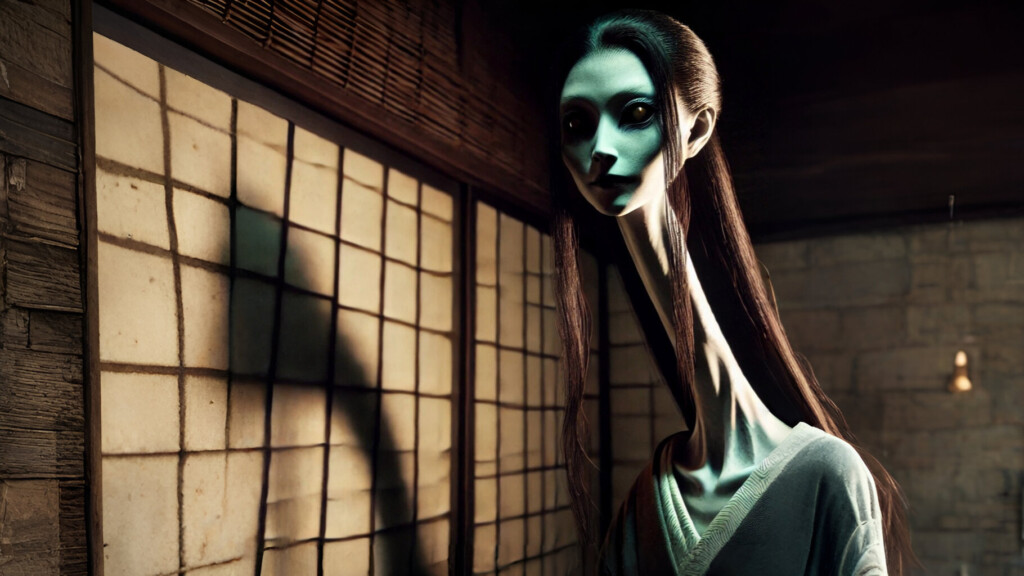Some legends send chills down your spine the moment you hear them. One such tale is that of the Rokurokubi legend—a woman who seems completely ordinary during the day, but when night falls, her neck stretches out in a ghostly, unnatural way, slithering through the darkness like a lost spirit.

The Terrifying Legend of Japan’s Long-Necked Ghost
Rokurokubi is a yōkai in cultural folklore from Japan, originating in the Edo period. During the day, they live among humans, appearing no different from anyone else. But when night comes, their neck extends in an unnerving fashion while their body remains still.
A traveler once stopped at what seemed like an ordinary house. In the dead of night, he was startled awake, only to be horrified by the sight of a floating head drifting in the air. Its lifeless eyes and whispering mouth sent shivers down his spine. A pale, elongated neck slithered along the ceiling beams, searching for something unseen. Paralyzed by fear, the traveler fainted. When he woke up the next morning, the woman greeted him with a gentle smile as if nothing had happened.
Rokurokubi – A Curse, a Punishment, or a Manifestation of Inner Darkness?
Many ghost stories evoke fear and unease, but the Rokurokubi legend holds a deeper meaning. It is an allegory for treachery, greed, and cruelty. Those who lived dishonestly were believed to be transformed into terrifying creatures after death—an inescapable punishment for their sins.
From a Buddhist perspective, Rokurokubi represents the concept of karma: those who live deceitfully will inevitably face the consequences of their own actions.
However, from a psychological standpoint, Japan’s long-necked ghost is not merely a tale of supernatural punishment but also a reflection of human inner conflicts:
🔍 Dissociative Identity Disorder (DID): When a person wears too many masks, they gradually lose their true self. They function normally by day, but when no one is watching, another identity emerges—just like how a Rokurokubi reveals its true nature under the cover of night.
🔍 Cognitive Dissonance Theory: The more someone lives in contradiction to their own morals, the more chaotic their mind becomes. If they continue to suppress their true self, they will eventually lose control—just as the Rokurokubi cannot resist revealing its monstrous nature when darkness falls.
Why Does Rokurokubi Appear in Yōkai in Cultural Folklore?
The Rokurokubi legend reflects a deep-seated fear of losing oneself. When people lose control over their identity, the mistakes of the past can return as ghosts that haunt them forever.
The image of Japan’s long-necked ghost appears in many works of art and film, symbolizing corruption and loneliness:
🎬 Kwaidan (1964) – A Japanese horror film featuring a chilling scene of a Rokurokubi creeping through the darkness.
📚 GeGeGe no Kitarō – A famous manga that portrays yōkai in cultural folklore, depicting Rokurokubi as both terrifying and tragic, highlighting the curse that binds them.
Regardless of how it is depicted, this legend remains a powerful warning: No one can hide their true nature forever. What we suppress during the day will inevitably return at night—like an endlessly stretching neck reaching out from the darkness within the soul.
